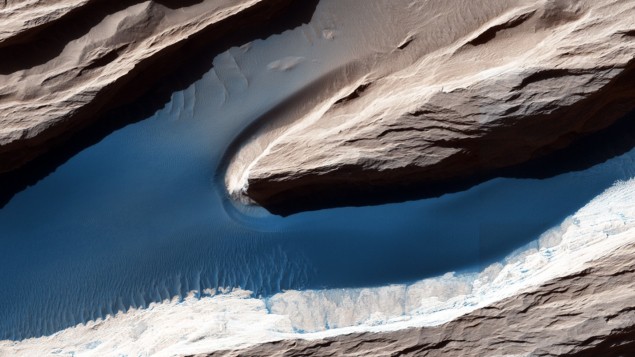New source of energy discovered on Mars
In the desire to establish a home on the red planet Mars, scientists are looking for all the needs that are necessary for life. Energy is an important need for the direction of living. For which scientists have discovered a source in the form of wind energy. This energy can play an important role in settling life on Mars. Scientists have exposed this discovery on 23 April.
Research done through NASA’s Ames Mars Global Climate Model
According to the research scientists, this discovery was made using the NASA Ames Mars Global Climate Model. Wind power could help power human missions to Mars, according to a study that calculated the short-term and seasonal variability of wind power generated by wind turbines on the Red Planet. Led by Victoria Hartwick of NASA, the research team suggests that the wind could supply enough energy on its own or could be used in conjunction with solar or nuclear power.
Many studies have been done so far regarding life on Mars.
Previous studies focused on physical resources, including water needs and shelter availability. Much research has been done on solar and nuclear power as energy sources for Mars. Nuclear power can be a human hazard. Current models of solar systems assume a lack of energy storage capacity to compensate for seasonal variations in day/night output. Due to which alternative sources like wind become important for stable energy production. This other energy comparison may be most useful on Mars.
Wind Power Less Powerful, But Still Useful
Wind energy is most efficient when the atmosphere is dense, but the low atmospheric density of Mars means that wind on the planet produces much less force than wind on Earth. For this reason, the Martian wind was not considered as a viable energy resource. Hartwick and his colleagues have challenged this notion and shown that daily and seasonal fluctuations in solar power can be compensated for by wind power.
Wind Energy Beyond Disruptions
Discovery scientist Hartwick says they were “surprised to find that, despite Mars’ thin atmosphere, the winds are still strong enough to generate lightning across large parts of the Martian surface”. The study shows that wind can work in conjunction with other energy resources, such as solar, to boost electricity generation. This can be especially helpful during local and global dust storms, when solar power is reduced and available wind power is increased. Wind would be a useful resource at night and around the winter solstice.
The path of stability is the most important
Hartwick suggests that sustainability is the most important consideration for powering future crewed missions to Mars – lots of uninterrupted power must be produced. Using a combination of wind turbines and solar arrays could allow missions to explore a much larger part of the planet.
Wind power can be useful in other planets too
Wind power could also revolutionize how humans get energy elsewhere in the solar system and on other planets. Hartwick says she is “particularly interested in looking at the potential for lightning on a moon like Titan, which has a very dense but cold atmosphere”. Nevertheless, much more work remains to be done on this topic internally – especially from an aerospace and engineering perspective – to determine operational efficiency and technical feasibility.
Source: NASA/JPL
Photo: NASA

Journalist Space science.
Working with India’s leading news paper.
और अधिक जानें

